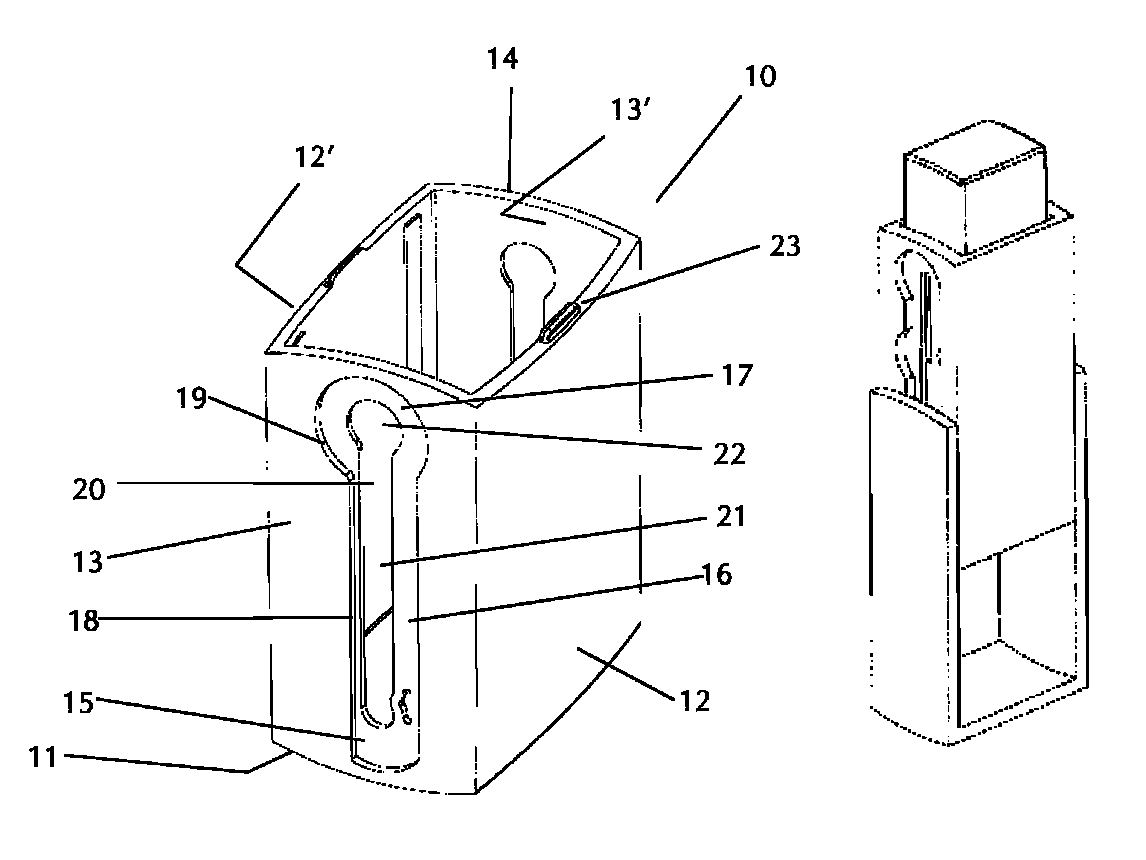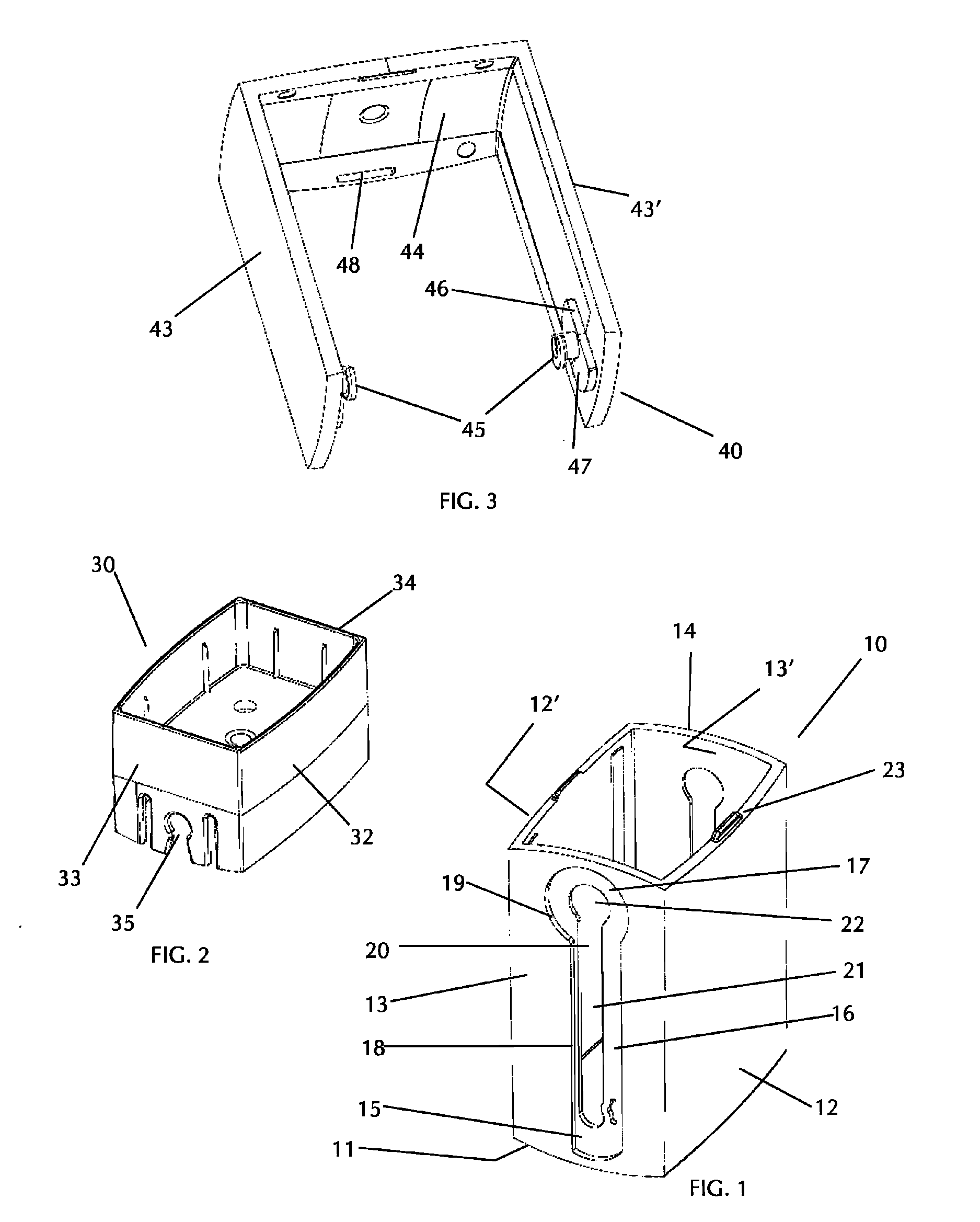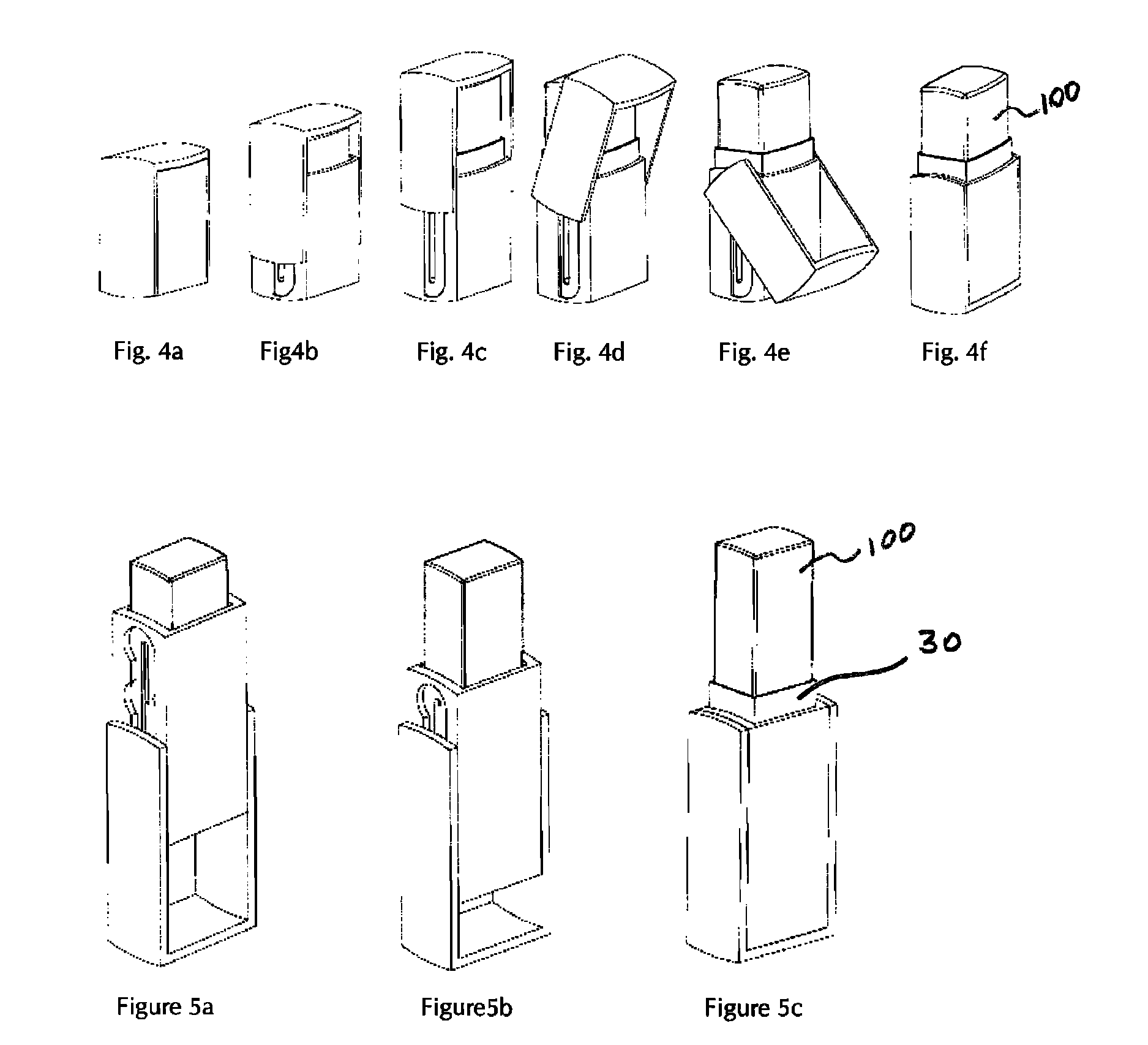Unitary cosmetic compact with decoupled motion
a compact device and compact technology, applied in the direction of packaging foodstuffs, packaging goods, transportation and packaging, etc., can solve the problems of cosmetic articles and carriers that the cap is not movable, and the cosmetic article and the carrier cannot move with respect to the base, so as to achieve the effect of increasing stability
- Summary
- Abstract
- Description
- Claims
- Application Information
AI Technical Summary
Benefits of technology
Problems solved by technology
Method used
Image
Examples
example 1
[0037]In one embodiment (see FIG. 1), the base (10) comprises at least one recessed section (15) and at least one groove within the recess. Preferably, the base comprises two recesses, one on each lateral wall (13, 13′) of the base. Each recess is in two sections. One section is a relatively long, straight recess (16) that runs vertically, along a lateral wall of the base. Approaching the top of the base, the straight recess opens into a circular recess (17). The circular recess has a diameter that is larger then the width of the straight recess. The entire recess is defined by a recess wall that bounds the recess. The straight recess is bounded on both sides by straight, parallel sections (18) of the recess wall. The circular recess is bounded by a circular section (19) of the recess wall. Within each recess is a groove (20). The groove is substantially straight and may or may not have a circular portion at the top end of the groove. In the embodiment shown in the FIG. 1, the groov...
example 2
[0047]The following example is somewhat simpler than the previous and shown in FIGS. 8a-8e. To reveal the detail underneath, FIG. 8 shows the working of a compact, with a portion of the cap (140) cut away. Again, the groove (200) may be thought of as comprising two parts, a straight groove (210) and an offset circular groove (220). In this embodiment, the circular groove (or a functional equivalent) is required. The straight groove runs vertically, along a lateral wall of the base (110) and opens into the offset circular groove. Unlike the previous example, there is no recess surrounding the groove. The circular groove is offset from the center line of the straight groove, such that one edge of the straight groove is substantially tangent to the perimeter of the circular groove. Furthermore, the offset of the circular groove on one side of the base is opposite to the offset on the other side of the base. The reason for this will be made clear, below.
[0048]The pivots (145) project fr...
example 3
[0050]The following example is very similar to the example 2 and shown in FIGS. 9a-9e. To reveal the detail underneath, FIG. 9 shows the working of a compact, with a portion of the cap (140) cut away. Again, the groove (200) may be thought of as comprising two parts, a straight groove (210) and an offset circular groove (320). In this embodiment, the circular groove (or a functional equivalent) is required. The straight groove runs vertically, along a lateral wall of the base (110) and opens into the offset circular groove. Again, there is no recess surrounding the groove. The circular groove is offset from the center line of the straight groove, but not as much as in example 2. Thus, the edge of the straight groove is not tangent to the perimeter of the circular groove. As before, the offset of the circular groove on one side of the base is opposite to the offset on the other side of the base.
[0051]The pivots (245) project from each interior surface of the lateral sections of the c...
PUM
 Login to View More
Login to View More Abstract
Description
Claims
Application Information
 Login to View More
Login to View More - R&D
- Intellectual Property
- Life Sciences
- Materials
- Tech Scout
- Unparalleled Data Quality
- Higher Quality Content
- 60% Fewer Hallucinations
Browse by: Latest US Patents, China's latest patents, Technical Efficacy Thesaurus, Application Domain, Technology Topic, Popular Technical Reports.
© 2025 PatSnap. All rights reserved.Legal|Privacy policy|Modern Slavery Act Transparency Statement|Sitemap|About US| Contact US: help@patsnap.com



